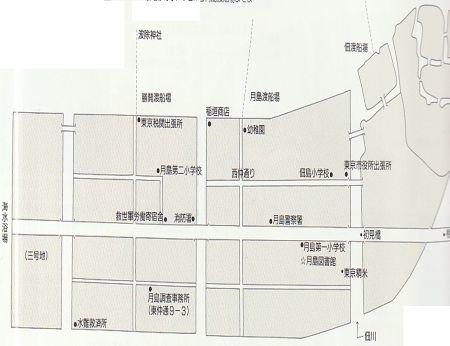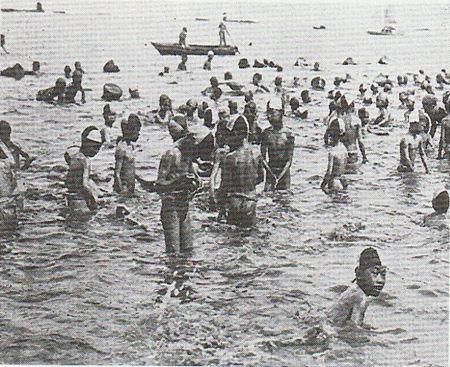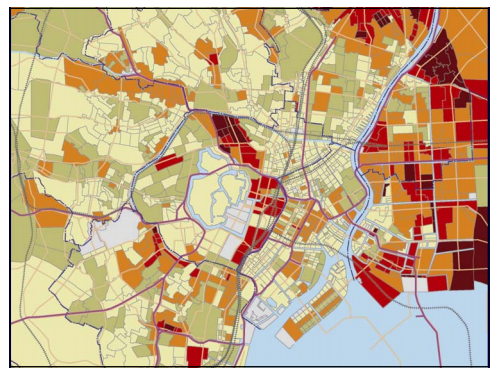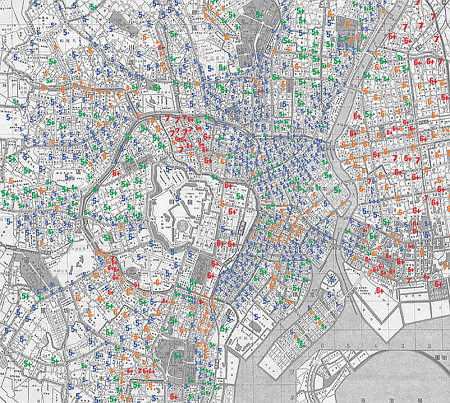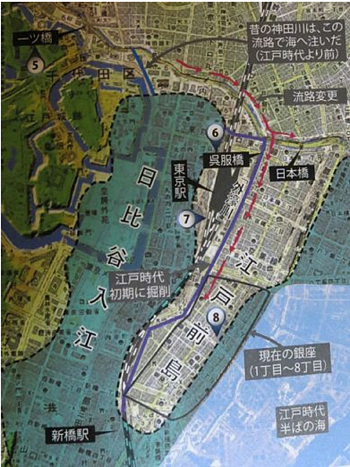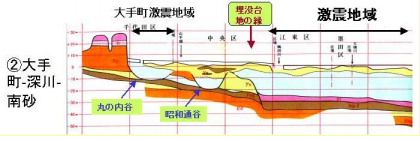This is the last blog on the theme of the Tsukishima area. About 100 years ago, there was a beach at the waterfront "Tsukishima district" in Tokyo. In the Meiji era, the sea bathing trend was triggered by Jun Matsumoto (Ryojun), the Army Army Medical Supervisor, who encouraged sea bathing for medical care and recreation.
The Omori Beach was opened in 1891, the Anamori Beach was opened in Meiji 35 (1902), and the Haneda Beach was opened in Meiji 42 (1909). It is said that sand baths became popular and were very popular. In the Taisho era, the beach spread across the city center to the Tsukishima and Fukagawa districts, and was opened along with the landfill of No. 3 (Kachidoki 5-6 chome) completed in 1913. At the beach, restaurants, accommodations and sea houses were developed and prospered greatly. On the map below, you can see a beach on the left (west side) of (No. 3).
Looking at the photos showing the sea bathing, there are many people in "loindoshi" that can not be considered from now on.
In the 1930s (1930)s, "baths" began to decline. This is due to landfill and seawater pollution.
After World War II, a period of high economic growth was reached, and beaches were not revived in Tokyo. Tsukishima is the same. Today's sea in Tokyo is unsuitable for sea bathing, but artificial beaches and hydrophilic revetments are being improved, and as water quality improves, it is expected that the liveliness will be restored again in the future. Expectations have been sent.
Reference:
1. 2005, Nihon University Faculty of Science and Engineering, "Study on the Transition of Leisure Culture at Waterfront in Tokyo"
2. Chuo-ku History Chart (Tsukishima edition)
